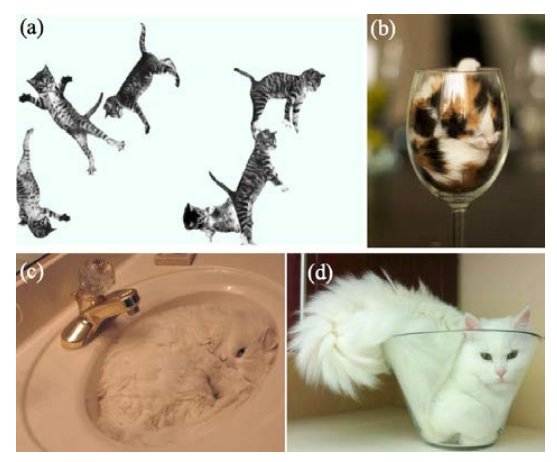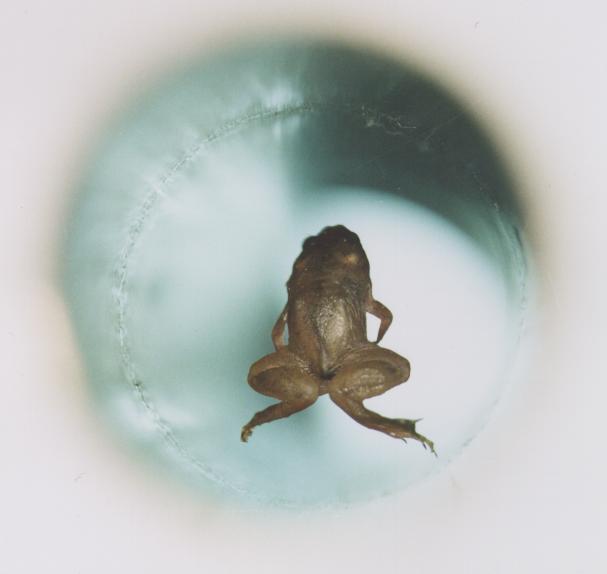
Each September the #IgNobel awards, a parody of the Nobel Prize, gives out awards to the weirdest bit of real research that has taken place in the past year. While the award itself is satirical social criticism and not a real award, the research it highlights is quite real. It’s also not new, this has been happening each and every Autumn since 1991. They even have an official awards ceremony that is held in Harvard’s historic and Sanders theatre where the winners are invited to attend and receive their awards along with a handshake from genuine, genuinely bemused Nobel laureates. While it might all be a spoof and a bit of fun, the award winners usually do turn up and are delighted to receive this recognition. This years ceremony was held Thursday last week (14th Sept).
Their tag line explains that they wish to “honor achievements that first make people laugh, and then make them think.” and so they have a very specific focus upon research that is on the surface apparently absurd, and yet might not be. It can perhaps be argued that it is often the quirky unusual stuff that grants us a unique insight into ourselves and reality.
OK, let’s skip any further preamble and jump right in. You know that within your heart of hearts you have no deep interest in who won, but rather are curious to know what they did to earn an IgNobel. If you are looking for the quirky and weird, then you will not be disappointed.
The 2017 IgNobel award winners
As you read, remember that this is real research published in credible peer-reviewed science journals.
PHYSICS PRIZE [FRANCE, SINGAPORE, USA] — Marc-Antoine Fardin, for using fluid dynamics to probe the question “Can a Cat Be Both a Solid and a Liquid?”
REFERENCE: “On the Rheology of Cats,” Marc-Antoine Fardin, Rheology Bulletin, vol. 83, 2, July 2014, pp. 16-17 and 30.
WHO ATTENDED THE CEREMONY: Marc-Antoine Fardin
PEACE PRIZE [SWITZERLAND, CANADA, THE NETHERLANDS, USA] — Milo Puhan, Alex Suarez, Christian Lo Cascio, Alfred Zahn, Markus Heitz, and Otto Braendli, for demonstrating that regular playing of a didgeridoo is an effective treatment for obstructive sleep apnoea and snoring.
REFERENCE: “Didgeridoo Playing as Alternative Treatment for Obstructive Sleep Apnoea Syndrome: Randomised Controlled Trial,” Milo A. Puhan, Alex Suarez, Christian Lo Cascio, Alfred Zahn, Markus Heitz and Otto Braendli, BMJ, vol. 332 December 2006.
WHO ATTENDED THE CEREMONY: Milo Puhan, Christian Lo Cascio, Markus Heitz, Alex Suarez. NOTE: Alex Suarez was the first patient, and was the inspiration for the study.
ECONOMICS PRIZE [AUSTRALIA, USA] — Matthew Rockloff and Nancy Greer, for their experiments to see how contact with a live crocodile affects a person’s willingness to gamble.
REFERENCE: “Never Smile at a Crocodile: Betting on Electronic Gaming Machines is Intensified by Reptile-Induced Arousal,” Matthew J. Rockloff and Nancy Greer, Journal of Gambling Studies, vol. 26, no. 4, December 2010, pp. 571-81.
WHO ATTENDED THE CEREMONY: Matthew Rockloff and Nancy Greer
ANATOMY PRIZE [UK] — James Heathcote, for his medical research study “Why Do Old Men Have Big Ears?”
REFERENCE: “Why Do Old Men Have Big Ears?” James A. Heathcote, British Medical Journal, vol. 311, 1995, p. 1668.
WHO ATTENDED THE CEREMONY: James Heathcote
BIOLOGY PRIZE [JAPAN, BRAZIL, SWITZERLAND] — Kazunori Yoshizawa, Rodrigo Ferreira, Yoshitaka Kamimura, and Charles Lienhard, for their discovery of a female penis, and a male vagina, in a cave insect.
REFERENCE: “Female Penis, Male Vagina and Their Correlated Evolution in a Cave Insect,” Kazunori Yoshizawa, Rodrigo L. Ferreira, Yoshitaka Kamimura, Charles Lienhard, Current Biology, vol. 24, no. 9, 2014, pp. 1006-1010.
WHO ATTENDED THE CEREMONY: They delivered a short video acceptance speech, filmed in a cave.
FLUID DYNAMICS PRIZE [SOUTH KOREA, USA] — Jiwon Han, for studying the dynamics of liquid-sloshing, to learn what happens when a person walks backwards while carrying a cup of coffee. REFERENCE: “A Study on the Coffee Spilling Phenomena in the Low Impulse Regime,” Jiwon Han, Achievements in the Life Sciences, vol. 10, no. 1, 2016, pp. 87-101.
WHO ATTENDED THE CEREMONY: Jiwon (“Jesse”) Han
NOTE: Jiwon Han was a high school student when he wrote the paper, at Korean Minjok Leadership Academy, Gangwon-do, Republic of Korea.
NUTRITION PRIZE [BRAZIL, CANADA, SPAIN] — Fernanda Ito, Enrico Bernard, and Rodrigo Torres, for the first scientific report of human blood in the diet of the hairy-legged vampire bat
REFERENCE: “What is for Dinner? First Report of Human Blood in the Diet of the Hairy-Legged Vampire Bat Diphylla ecaudata,” Fernanda Ito, Enrico Bernard, and Rodrigo A. Torres, Acta Chiropterologica, vol. 18, no. 2, December 2016, pp. 509-515.
WHO ATTENDED THE CEREMONY: The winners delivered their acceptance speech via recorded video.
MEDICINE PRIZE [FRANCE, UK] — Jean-Pierre Royet, David Meunier, Nicolas Torquet, Anne-Marie Mouly and Tao Jiang, for using advanced brain-scanning technology to measure the extent to which some people are disgusted by cheese.
REFERENCE: “The Neural Bases of Disgust for Cheese: An fMRI Study,” Jean-Pierre Royet, David Meunier, Nicolas Torquet, Anne-Marie Mouly and Tao Jiang, Frontiers in Human Neuroscience, vol. 10, October 2016, article 511.
WHO ATTENDED THE CEREMONY: The winners delivered their acceptance speech via recorded video.
COGNITION PRIZE [ITALY, SPAIN, UK] — Matteo Martini, Ilaria Bufalari, Maria Antonietta Stazi, and Salvatore Maria Aglioti, for demonstrating that many identical twins cannot tell themselves apart visually.
REFERENCE: “Is That Me or My Twin? Lack of Self-Face Recognition Advantage in Identical Twins,” Matteo Martini, Ilaria Bufalari, Maria Antonietta Stazi, Salvatore Maria Aglioti, PLoS ONE, vol. 10, no. 4, 2015: e0120900.
WHO ATTENDED THE CEREMONY: Matteo Martini, Ilaria Bufalari
OBSTETRICS PRIZE — [SPAIN] — Marisa López-Teijón, Álex García-Faura, Alberto Prats-Galino, and Luis Pallarés Aniorte, for showing that a developing human fetus responds more strongly to music that is played electromechanically inside the mother’s vagina than to music that is played electromechanically on the mother’s belly.
REFERENCE: “Fetal Facial Expression in Response to Intravaginal Music Emission,” Marisa López-Teijón, Álex García-Faura, and Alberto Prats-Galino, Ultrasound, November 2015, vol. 23, no. 4, pp. 216–223.
REFERENCE: “Fetal Acoustic Stimulation Device,” patent ES2546919B1, granted September 29, 2015 to Luis y Pallarés Aniorte and Maria Luisa López-Teijón Pérez.
WHO ATTENDED THE CEREMONY: Marisa López-Teijón, Álex García-Faura, Alberto Prats-Galino, and Luis Pallarés Aniorte
NOTE: They also offer a product based on this research The product is named “Babypod“.
The Award Ceremony
They live streamed the award ceremony and then made the video available afterwards. It also gets broadcast on NPR so has quite a wide reach. Here it is …
Further Reading
- Home of the IgNobel Awards is the Improbable Research website
- The Wikipedia page all about the IgNobels
- Guardian article about the 2017 winners.
- Links back to the postings I had for the winners in 2016, and 2015.
One Last Fun fact
 In 2000 Andre Geim received an IgNobel for levitating frogs with magnets. He then later went on to win an actual Nobel Prize ten years later in 2010 for his work on graphene.
In 2000 Andre Geim received an IgNobel for levitating frogs with magnets. He then later went on to win an actual Nobel Prize ten years later in 2010 for his work on graphene.
#NobelFacts Andre Geim is the only person so far who has been awarded an Ig Nobel (levitating frog) and a #NobelPrize (discovering graphene) pic.twitter.com/N4hQR89SbX
— The Nobel Prize (@NobelPrize) September 15, 2017
A few more tweets
Ig Nobel ECONOMICS PRIZE 4 experiments to see how contact with a crocodile affects a person's willingness to gamble https://t.co/9tBZGS9AGn pic.twitter.com/47LKjMywFP
— The Nobel Prize (@NobelPrize) September 15, 2017
"Ig Nobel prize 2017: Cats are liquid, Didgeridoos for snoring & gender-bending insects" https://t.co/nN1XGqJCAg pic.twitter.com/OuguCeDZst
— Improbable Research (@improbresearch) September 17, 2017
https://twitter.com/Vic_Gill/status/908612752054333440
“If you DIDN’T win an Ig Nobel Prize tonight — and especially if you did — better luck next year."
— Improbable Research (@improbresearch) September 14, 2017
